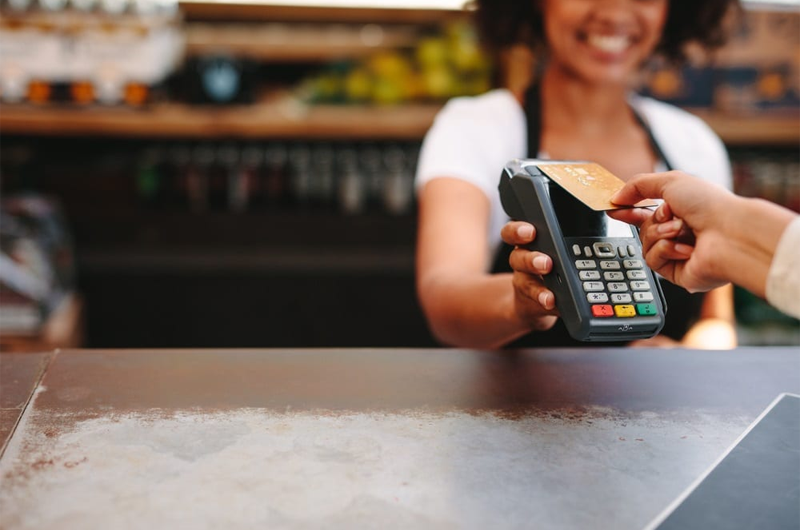As South East Asia continues to develop and embrace technology, contactless payments are becoming commonplace, especially in cities and larger towns. Though there are undoubtedly many benefits to this cashless way of paying for goods and services, there are a few downsides, too. Here is Asteria’s guide to the pros and cons of using contactless payments in the Philippines.
Pros
Safety
Though the crime rate is comparatively low in most parts of the Philippines, some tourists have experienced robbery and pickpocketing, making them wary of carrying cash, especially in busier areas. Contactless payments mean that this risk is significantly minimised. Providing you always keep your wallet or compatible device hidden or about your person, you shouldn’t have any problems. Pickpockets usually target people using cash as its far easier to spend quickly without it being traced.
Money Management
Providing you take the time to check your statement regularly or set up notifications that inform you of any activity taking place within your account, contactless payments can be a far more accurate way to manage your money than using cash. You can see exactly where you’ve been spending and you also have a digital record of any transactions that have taken place, meaning you are covered in the case of disputes or refunds. It’s very easy to lose track of how much cash you’re spending, especially if you’re on holiday or enjoying an evening out with friends. Contactless technology allows you to stay on top of your purchases in real time, which can significantly reduce your risk of overspending.
Fast and Convenient
Whether you’re settling the bill for a large group of people in a restaurant or paying for cinema tickets, tapping your card or device on to a reader is a much quicker process than handing over physical currency and waiting for change. It might not sound especially significant but as more customers begin to embrace this technology, queuing time is being reduced and transactions are becoming far more efficient. This is great for businesses as well as consumers.
No Exchange or Withdrawal Fees
Though some banks may charge a small fee for using contactless payments overseas, this is usually far less than you would expect to pay at an airport currency exchange. In the Philippines, like much of the world, some small businesses will have a minimum spend limit on contactless payments and may also impose a service charge, but you usually end spending far less than exchanging physical currency or using your cash card at an ATM.
Security and Peace of Mind
If you are unlucky enough to fall victim to theft in the Philippines, contactless payments can help the authorities to catch the perpetrators and bring them to justice. Whenever you make a contactless payment, you leave an online trail that is stored digitally for security and record keeping purposes. This means that when you report your device or payment card stolen, your provider can track any suspicious activity and even inform the authorities of the last known location of the thief. In addition to this, most banks now offer robust protection from incidences like this, which is acting as a great deterrent to would be digital robbers.
Cons
It’s Very Easy to Overspend
If you have a habit of overspending or being a little impulsive with your purchases, this kind of technology can mean that you forget how much money you’re parting with. An iced coffee here, a bowl of street food there and before you know it, you’ve spent half of your weekly budget in an afternoon. It is possible to set up notifications that remind you of your balance but if you forget to do this or the message gets lost amongst the others in your inbox, it’s very easy to lose track of your available funds.
Payments Aren’t Always Processed Immediately
Though processing times are generally improving all the time, it is still commonplace for some payments to take a few days to clear. If you forget about something you’ve bought, the transaction can come as something of a nasty shock when you check your statement a few days later. This can be particularly unpleasant if you have been using your card in a bar or restaurant as its very easy to get carried away without realising it.
You Are Still Vulnerable to Crime
Pickpockets can swipe your card just as easily as they can steal your cash. One serious downside of contactless technology is that it allows anybody to use your card or device to make payments without having to know your PIN number. Until you report your card stolen, it is possible for a thieve to make multiple transactions without you even realising. Some criminals will deliberately make several smaller purchases in a short space of time to avoid arousing suspicion. Therefore, it’s essential to report any lost or stolen cards as soon as you possibly can.
Technology Can and Does Fail
When technology doesn’t work, its worse than useless, it’s infuriating. Thankfully, malfunctions are rare, but it can be extremely embarrassing if you’ve agreed to pay for something like a meal or a round of drinks at the bar, only to realise that your contactless card or device is no longer working. Chips can come loose, and material can get damaged, so although contactless tech is generally a positive thing, when it fails, we quickly begin to see its limitations.
It Can Encourage Irresponsible Spending
In the days when you still needed cash to make most purchases, it was much harder to spend money without meaning to. These days, retailers pray on people who are susceptible to impulse buys and spur of the moment decisions. Using contactless payments means that you don’t have to run out to cash machine, but they also mean you don’t have the time to think over any last-minute purchases. Most people don’t find this to be an issue, but for those that do, contactless payments are more of a curse than a blessing.

